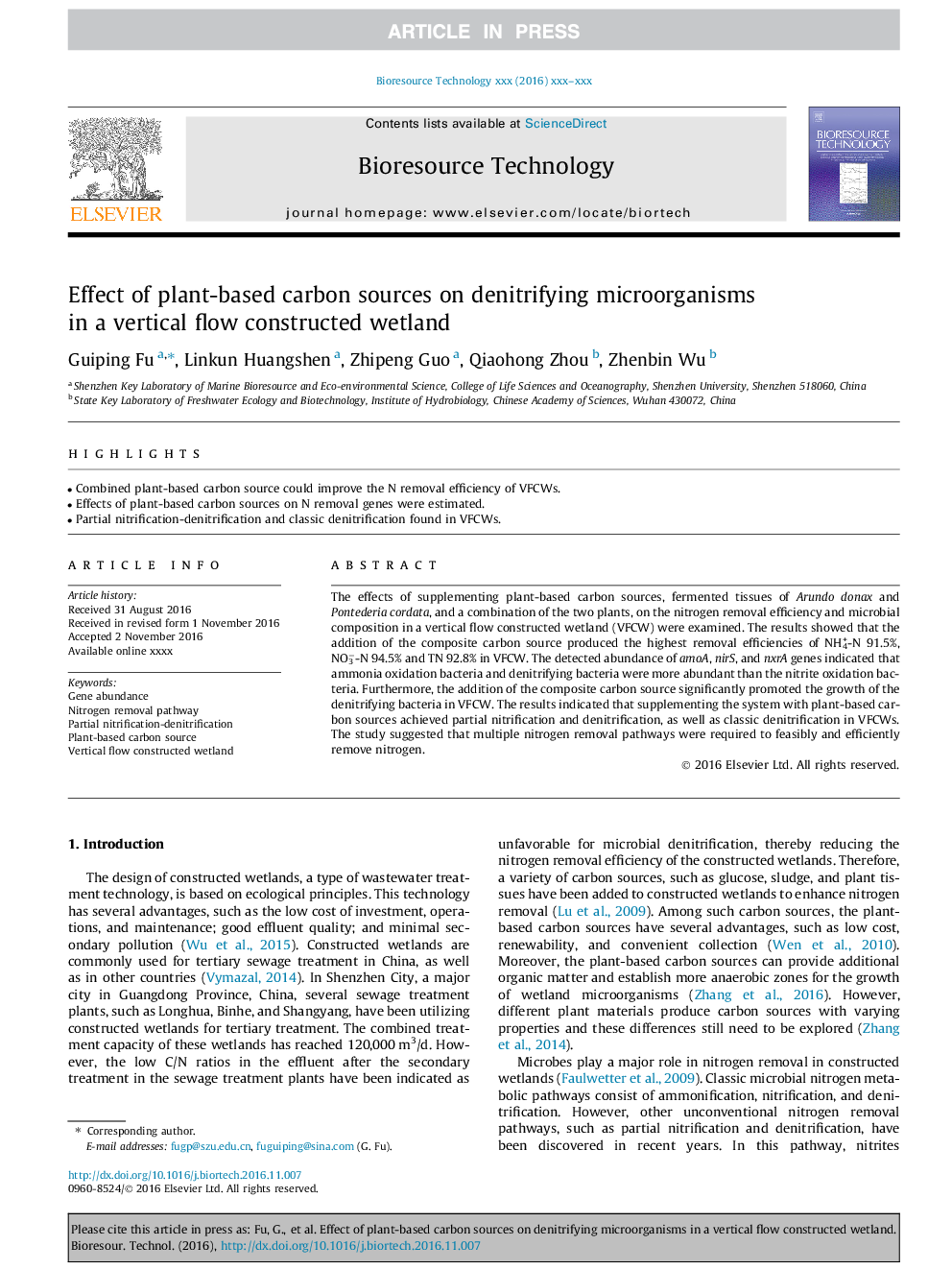| Article ID | Journal | Published Year | Pages | File Type |
|---|---|---|---|---|
| 4997836 | Bioresource Technology | 2017 | 8 Pages |
Abstract
The effects of supplementing plant-based carbon sources, fermented tissues of Arundo donax and Pontederia cordata, and a combination of the two plants, on the nitrogen removal efficiency and microbial composition in a vertical flow constructed wetland (VFCW) were examined. The results showed that the addition of the composite carbon source produced the highest removal efficiencies of NH4+-N 91.5%, NO3â-N 94.5% and TN 92.8% in VFCW. The detected abundance of amoA, nirS, and nxrA genes indicated that ammonia oxidation bacteria and denitrifying bacteria were more abundant than the nitrite oxidation bacteria. Furthermore, the addition of the composite carbon source significantly promoted the growth of the denitrifying bacteria in VFCW. The results indicated that supplementing the system with plant-based carbon sources achieved partial nitrification and denitrification, as well as classic denitrification in VFCWs. The study suggested that multiple nitrogen removal pathways were required to feasibly and efficiently remove nitrogen.
Related Topics
Physical Sciences and Engineering
Chemical Engineering
Process Chemistry and Technology
Authors
Guiping Fu, Linkun Huangshen, Zhipeng Guo, Qiaohong Zhou, Zhenbin Wu,
